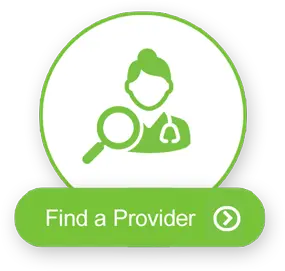You likely spent weeks or even months planning for the holidays.
Maybe you spent hundreds of dollars on gifts. Maybe you spent hours cleaning your house, baking, decorating and “getting in the holiday spirt.” Maybe you partied until all hours of the night with friends and family. Maybe you spent time with loved ones, cuddled up by the fire. Maybe you spent some much-needed downtime by watching your favorite movies. Maybe you traveled long distances and took time off work.
Well, now, it’s January. The decorations are down, the parties are over, and it’s time to settle back into your routine.
“Getting back into the swing of things” may lead to the post-holiday blues and even trigger depressive symptoms.
An article in Psychology Today says the January blues can happen for any number of reasons, including:
- An abrupt change in your social calendar: from a month full of parties and activities to zero plans and loneliness
- A pile of emails: taking time off work may mean stress while playing “catch up” at work
- All that family time: for some, time with extended family can bring up unresolved issues and negative emotions that can leave a person feeling emotionally drained
- The weight gain: overindulging in food and drink over the holidays could result in regret over tighter-fitting clothes and an increased waistline
- Disappointment: if the holidays, gift-giving or other elements didn’t live up to your expectations, you may be working through feelings of resentment or inadequacy
“Psychologically, the post-festive period can bring a sense of loss, change or mourning after the busy social season. Dealing with post-holiday debt, or having less money available can also make us feel less happy and carefree,” Lola Ross, registered nutritional therapist and part of the team behind digital hormone, cycle and mood platform Moody, told Cosmopolitan. “Biologically, the shift in daylight hours can often mean less sunshine exposed on our skin, reducing our ability to syntheses vitamin D – a vitamin associated with healthy brain function.”
It is normal to experience a let-down after the holidays. However, these feelings may signal a deeper issue – major depressive disorder.
Is it Depression or the Blues?

One of the hallmarks of MDD is the length of the symptoms – experiencing the symptoms nearly every day for a period longer than two weeks. The Mayo Clinic warns of these symptoms of MDD:
- Feeling hopelessness, empty or unrelenting sadness
- Angry outbursts or feeling irritable even over trivial matters
- Trouble sleeping or sleeping too much
- Reduced or increase appetite
- Confusion
- Unexplained physical ailments like back trouble or headaches
- Loss of energy
If you experience any of these symptoms for more than two weeks, please contact your healthcare provider.
Beating the Post-Holiday Blues
January may seem interminable, but you can make it a little more tolerable.
First, be aware of the outside factors that are impacting your state of mind. Did you know that Jan. 24 has earned the title of the most “depressing” day of the year? According to British psychologist, Dr. Cliff Arnalls of Cardiff University, there are three reasons why this day can wreak havoc on our mood:
- The weather: it is typically a gloomy and gray day
- Bills: holiday bills are being delivered
- Lapsing on New Year’s resolution: when people falter on New Year’s resolutions, it can lead to feelings of guilt and self-loathing
Knowing Jan. 24 (and many other days in January for that matter) can be difficult, try to eat healthy, exercise, get enough sleep, and do something fun.
Second, try to redirect your thinking. Even if you aren’t feeling positive, redirecting your negativity can help your psyche. Think of one good thing in your life, practice gratitude and search out some humor.
“How you think about the events and people in your life can either help you reframe things in more positive ways that help you cope or take you down a rabbit hole of negative thinking and feeling bad about yourself, other people, and your prospects,” according to an article in Psychology Today. “You can’t always control what you think, but you can learn to identify when you’re sinking into a negative pattern, and then reboot and redirect your thinking along a more constructive or hopeful path.”
Third, talk to your doctor about using a light lamp if you live in an area where the weather is gray. The Mayo Clinic writes: “A light therapy box mimics outdoor light. Researchers believe this type of light causes a chemical change in the brain that lifts your mood and eases other symptoms of SAD (seasonal affective disorder).”
Fourth, get out. The weather may make you feel like hibernating, but getting out of the house and scheduling social activities in January can help bring you out of your dark mood.
Finally, be kind to yourself and others. You are only human, and everyone is allowed some downtime and down moods. Also, recognize that others may be feeling sad too, so assume good intentions in others and practice a random act of kindness to make them (and you) feel better.
For more information about seasonal depression, visit our website: https://genesight.com/blog/patient/tips-to-cope-with-seasonal-affective-disorder-sad/.
Our articles are for informational purposes only and are reviewed by our Medical Information team, which includes PharmDs, MDs, and PhDs. Do not make any changes to your current medications or dosing without consulting your healthcare provider.
The GeneSight test must be ordered by and used only in consultation with a healthcare provider who can prescribe medications. As with all genetic tests, the GeneSight test results have limitations and do not constitute medical advice. The test results are designed to be just one part of a larger, complete patient assessment, which would include proper diagnosis and consideration of your medical history, other medications you may be taking, your family history, and other factors.
If you are a healthcare provider and interested in learning more about the GeneSight test, please contact us at 855.891.9415. If you are a patient, please talk with your doctor to see if the GeneSight test may be helpful.








